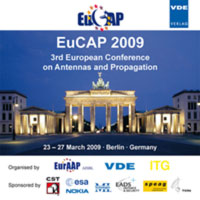A Comparison of the Cylindrical Folded Helix Q to the Gustafsson Limit
Konferenz: EuCAP 2009 - 3rd European Conference on Antennas and Propagation
23.03.2009 - 27.03.2009 in Berlin, Germany
Tagungsband: EuCAP 2009
Seiten: 4Sprache: EnglischTyp: PDF
Persönliche VDE-Mitglieder erhalten auf diesen Artikel 10% Rabatt
Autoren:
Best, Steven R. (The MITRE Corporation, 202 Burlington Road, Bedford, MA USA 01730)
Inhalt:
The primary characteristics of interest when designing or evaluating an electrically small antenna are the radiation efficiency, the operating bandwidth or quality factor (Q), and the mechanism used to achieve an impedance match. Often, the relative advantage of a small antenna design is quantified by how closely the antenna Q approaches the lower bound or the Chu limit. While the Chu limit is defined in terms of the spherical volume occupied by the antenna, many small antenna designs are constrained to fit within volumes other than a sphere. In these instances, the antenna Q will not as closely approach the Chu limit as a design that fully occupies the available spherical volume defined by the value of ka. To address this issue, Gustafsson et al derived lower bounds for antennas of arbitrary shape with a specific focus on cylindrical and planar shaped antennas. In this paper we consider the quality factor of the cylindrical folded helix, an antenna design that effectively utilizes the available cylindrical volume. We compare its Q to the Gustaffson limit as a function of length-to-diameter ratio, while maintaining a fixed value of ka, and show that it’s Q is above or at Gustafsson’s lower bound for cylindrical shaped antennas.


